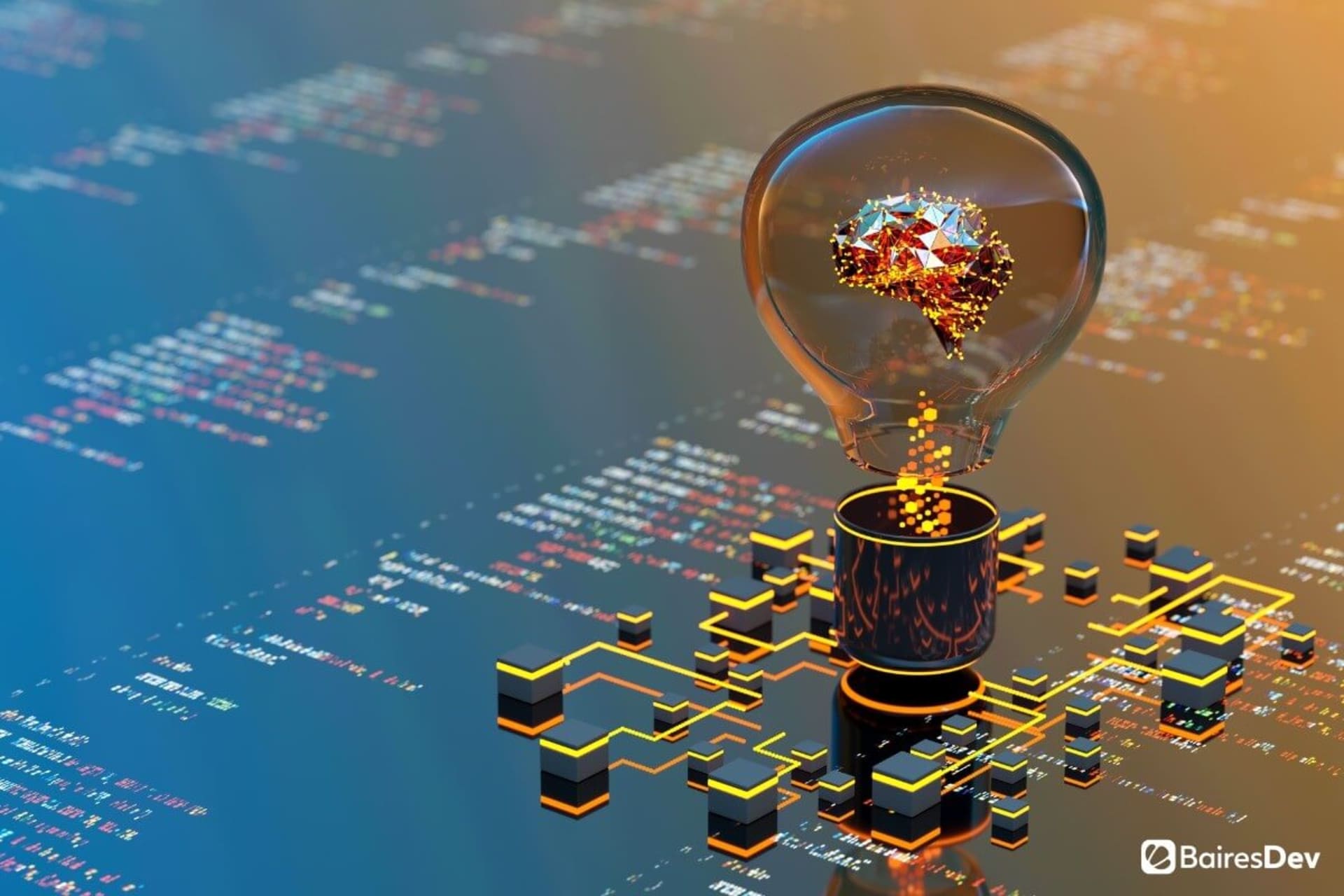Artificial intelligence continues to reshape the business landscape, driving digital transformation across industries with unprecedented momentum. As AI tools mature, new AI trends are emerging that promise to redefine how companies operate, from optimizing business processes to enhancing customer experiences. Generative AI, for example, is gaining widespread traction, automating creative tasks and accelerating content production, while machine learning remains essential for refining predictive models and improving decision-making.
AI’s growth is not just about mainstream applications; shadow AI—unofficial or unregulated AI tools used outside IT oversight—also influences how businesses innovate and experiment. Moreover, advancements in computer vision are enabling smarter automation, particularly in sectors like manufacturing and healthcare, where real-time visual data analysis is critical. Companies are also prioritizing data management and analysis as they look to maximize the value of AI in their operations so that AI initiatives align with business goals.
Organizations will focus more on practical AI implementations as these AI trends develop, embedding AI into day-to-day workflows to drive efficiency. Generative AI will likely become integral to marketing, design, and customer engagement, while the growing demand for regulatory oversight signals a shift toward more structured AI governance. With these technologies evolving rapidly, the next 12 months will be defined by how businesses adapt AI innovations to unlock new opportunities and remain competitive.
1. Tailored AI models driven by proprietary business data
Enterprises are increasingly adopting AI systems fine-tuned with proprietary data to better align technology with their unique goals and challenges. Here’s how various industries might leverage these models:
- Healthcare providers can use AI to predict patient risks and develop personalized treatment plans based on medical histories.
- Retailers may apply AI to forecast inventory needs and tailor product recommendations to customer behavior.
- Banks can implement AI to detect fraud more accurately and refine credit scoring by analyzing transaction patterns.
- Manufacturers could use predictive AI to anticipate equipment failures and schedule maintenance, minimizing downtime.
- Educational institutions will likely rely on AI to adjust learning materials dynamically, responding to individual student progress.
- Farmers can adopt AI to optimize irrigation and crop yields by monitoring environmental data and weather forecasts.
- Energy companies can use AI to predict peak consumption and balance loads across grids, improving efficiency.
- Logistics firms may employ AI to map delivery routes in real time, reducing delays by accounting for traffic and weather changes.
Tailored AI models offer businesses across industries the flexibility to solve specific challenges while improving precision, personalization, and efficiency.
2. AI regulation intensifies with the European Union AI Act leading global standards
The European Union AI Act is poised to become a benchmark for global AI governance, signaling a shift toward stricter oversight of artificial intelligence. The Act categorizes AI systems by risk levels, such as high-risk, limited-risk, and unacceptable-risk applications. High-risk AI—used in healthcare, employment, and law enforcement—will require thorough auditing, transparency reports, and continuous monitoring to maintain safety and compliance.
The EU’s legislative approach is designed to safeguard human rights by addressing issues like algorithmic bias, accountability, and data privacy. Companies deploying AI will need to get their systems to meet these stringent standards, whether operating in Europe or interacting with European markets. As other nations look to the EU’s leadership, global organizations may face increased regulatory fragmentation, with some countries adopting similar frameworks while others pursue their own standards.
This regulatory wave could also affect innovation, potentially slowing AI deployment as companies recalibrate to meet new compliance requirements. However, it may also lead to better, more accountable AI development. Beyond Europe, countries like China are already advancing AI-specific regulations, and the U.S. is under pressure to introduce comparable measures to avoid lagging behind in AI governance.
Ultimately, the EU AI Act is not just about rules but about setting ethical expectations for AI on the global stage. Organizations that embrace these standards early will likely gain trust and reputational advantage, while those that fall short risk fines, operational disruptions, or exclusion from major markets. This regulatory momentum is expected to shape the AI landscape significantly, influencing innovation, adoption, and public perception of AI systems worldwide.
3. Generative AI enables real-time video creation from text prompts
Generative AI is transforming media production by offering the ability to create videos from simple text prompts in real time. These tools operate by processing written descriptions and constructing visual elements—including motion, audio, and transitions—without human involvement in traditional video editing workflows.
This technology is revolutionizing industries by accelerating content creation, lowering production costs, and making video more accessible. Marketers can deploy personalized video campaigns rapidly, while media organizations generate videos on the fly to complement news stories. As this technology expands, industries like education, corporate training, and entertainment are also poised to benefit.
| Industry | Use Case for Generative AI Video Tools | Impact |
| Marketing | Create personalized ads, social media posts, and campaigns based on customer data | Faster content production, higher engagement |
| Media & Journalism | Generate dynamic video summaries of news articles | Enhanced storytelling with visuals |
| Education | Produce customized video lessons on specific topics or concepts | Improved engagement and personalized learning |
| Corporate Training | Develop training videos tailored to individual employee needs | Faster onboarding and more efficient skill-building |
| Social Media | Enable influencers to create timely content in response to trends | Increased relevance and audience engagement |
| Small Businesses | Generate product explainer videos without professional production costs | Access to professional-looking content on a budget |
| Entertainment & Filmmaking | Prototype video scenes and storyboards during pre-production | Faster iteration cycles for creative projects |
| E-commerce | Automatically generate product showcase videos for websites and ads | Enhanced customer experience and conversions |
Generative video tools democratize content creation, making it easier for individuals and businesses without large budgets to produce professional-quality visuals. However, the rise of these tools also introduces challenges, including concerns about intellectual property and the authenticity of AI-generated content. As the technology matures, companies must balance creativity with responsibility, maintaining ethical use while maximizing the potential of these powerful tools.
4. Energy-efficient AI models reduce cloud dependency and power consumption
As AI adoption grows, companies are shifting toward energy-efficient models that can operate directly on local devices, minimizing reliance on cloud infrastructure. These compact models improve performance while reducing latency, making real-time decision-making possible without constant cloud communication. Running AI locally also enhances data privacy, as sensitive data remains on the device instead of being transmitted across networks.
This trend is particularly important as the power demands of cloud computing soar. Compact AI models allow businesses to deploy AI on edge devices—like smartphones, IoT sensors, and autonomous drones—significantly lowering energy consumption. These models rely on techniques like quantization, pruning, and knowledge distillation, which reduce the size and complexity of neural networks without compromising their effectiveness.
In addition to environmental benefits, localized AI helps companies cut costs by reducing cloud storage and processing expenses. Fields such as healthcare and manufacturing are early adopters of these technologies, where privacy and real-time processing are essential. Moving toward energy-efficient AI solutions will not only make operations more sustainable but also prepare businesses for future environmental regulations.
5. Autonomous AI agents capable of managing sequential tasks without supervision
Instead of relying on predefined instructions for every step, autonomous AI agents are learning to handle multiple tasks in sequence, adapting as they go based on outcomes and feedback. This makes them particularly suited for environments requiring quick decisions or shifting priorities, such as logistics, customer service, or process automation.
These agents can independently plan and execute sequential tasks by linking multiple operations. For example, an AI agent managing customer service might respond to inquiries, update customer profiles, and escalate issues to the right department—all without manual intervention. In manufacturing, autonomous agents could monitor production lines, adjust schedules, and initiate maintenance requests as needed.
As these agents become more prevalent, businesses can expect improved efficiency, fewer human errors, and reduced operational costs. However, this shift raises challenges around AI governance, as maintaining ethical behavior and accountability becomes critical. The potential of these AI agents lies in their ability to transform workflows, making processes more autonomous and responsive in real-time environments.
6. Explainable AI enhances trust in high-stakes industries
In industries like healthcare and finance, where decisions have serious consequences, Explainable AI (XAI) is becoming essential to help professionals understand and justify AI’s recommendations. Explaining what your AI is doing is crucial in a world where shadow AI is gaining momentum.
In healthcare, XAI helps clinicians trust AI recommendations for diagnosis or treatment. For example, if an AI tool suggests a specific medication regimen based on patient data, doctors need clear reasoning to confirm it aligns with clinical best practices. This transparency helps avoid errors, builds confidence among medical professionals, and reassures patients about the safety of AI-assisted decisions. Additionally, regulators demand traceable AI decisions in critical areas like radiology and personalized medicine to maintain compliance and uphold patient care standards.
In finance, XAI supports risk assessments, fraud detection, and loan approvals. Financial analysts and regulators need to understand how AI systems evaluate creditworthiness or flag fraudulent transactions to maintain fairness and comply with anti-discrimination laws. Without explainability, decisions like loan rejections could be contested, exposing institutions to legal risks. XAI provides clarity, making AI tools not only more trustworthy but also easier to integrate into existing business operations and regulatory frameworks.
7. Predictive AI analytics optimize supply chains and prevent disruptions
Staying competitive in today’s fast-moving economy requires foresight—predictive AI is helping companies forecast trends and identify potential supply chain disruptions before they occur. These algorithms analyze large datasets, including historical sales, weather forecasts, and geopolitical events, to provide actionable insights that help businesses stay agile and competitive.
- Predictive AI can identify shifts in consumer demand early, allowing businesses to adjust production schedules and stock levels accordingly.
- It monitors transportation networks and forecasts potential delivery delays, helping logistics teams reroute shipments to avoid bottlenecks.
- Companies can use predictive analytics to anticipate supplier risks, such as material shortages or political instability, enabling them to switch suppliers preemptively.
These AI-driven insights allow businesses to minimize waste, lower inventory costs, and avoid expensive last-minute corrections. In industries like retail and manufacturing, predictive analytics helps keep the right products in stock at the right time. Meanwhile, companies in perishable goods can optimize shipping routes to prevent spoilage.
The ability to foresee disruptions and adapt in real time provides businesses with a competitive edge, reducing downtime and improving customer satisfaction through smoother operations. Predictive AI is becoming an essential tool for companies striving for resilience in an increasingly unpredictable global economy.
8. AI-powered cybersecurity prevents breaches before they occur
Proactive cybersecurity strategies are becoming the norm as AI technologies monitor behavior patterns and detect threats as they happen, neutralizing risks before they escalate into breaches. This predictive capability allows organizations to address vulnerabilities before attackers exploit them, enhancing data privacy and operational security.
Machine learning algorithms continuously improve by learning from historical data and evolving cyberattack methods, helping businesses stay ahead of new threats. For example, AI models can detect unusual login attempts, such as those originating from unfamiliar locations or devices, and automatically block access. Similarly, predictive analytics can forecast risks based on previous cyberattacks, supporting proactive measures to safeguard business operations.
AI-powered systems are also critical in managing the growing complexity of cybersecurity strategies, including implementing zero-trust frameworks that require continuous authentication. As AI governance becomes a focus, organizations must align their cybersecurity models with data privacy laws while effectively neutralizing threats. With these capabilities, businesses can better protect critical infrastructure, customer information, and intellectual property from the rising tide of sophisticated cyberattacks.
9. RPA integrates with AI for end-to-end business automation
Robotic Process Automation (RPA) is evolving beyond simple task automation by incorporating AI technology, marking an essential trend in AI. This integration enables businesses to automate entire workflows, from invoicing to customer onboarding, creating smoother operations with fewer human errors. Traditional RPA handles repetitive processes, but AI adds cognitive capabilities, allowing systems to analyze, learn, and adapt autonomously.
Implementing AI alongside RPA allows systems to process unstructured data like emails, invoices, or chat messages. For example, AI-enhanced RPA can cross-reference invoices with purchase orders, identify discrepancies, and initiate payments autonomously. This shift improves efficiency by reducing the time and effort required for tasks traditionally handled by humans.
AI’s influence extends to HR processes, where RPA automates onboarding by generating employee contracts, verifying documents, and scheduling training—all without human involvement. This integration maintains consistency and accelerates processes, improving the employee experience while reducing administrative burdens.
As AI trends continue to develop, RPA systems will become more dynamic, adapting to evolving business needs. Companies embracing end-to-end automation will gain a competitive edge by streamlining operations, lowering costs, and enhancing accuracy, paving the way for fully automated business functions.
10. Generative AI reshapes creative industries with automated content production
Creating high-quality content at scale has long been a challenge, but generative AI is making it easier than ever. From large language models generating product descriptions to multimodal AI tools crafting visual and audio content, businesses are embracing automation to enhance their creative workflows. These AI applications are now playing a key role in industries such as fashion, marketing, and media, allowing teams to iterate quickly and explore new ideas.
Brands are already using generative AI tools to develop personalized marketing campaigns, while fashion designers leverage AI to create patterns or prototypes within seconds. Media companies are also benefiting by automating video and audio content production, speeding up time to market. With generative AI projects becoming more accessible, smaller companies can now experiment creatively without large budgets, gaining a competitive edge. As these tools evolve, they will become essential in redefining creativity, blending human ingenuity with AI-driven efficiency to unlock new possibilities.
11. AI-optimized hardware accelerates machine learning tasks on edge devices
As AI applications expand, businesses are increasingly shifting towards hardware optimized for edge computing, moving workloads away from centralized cloud systems. This shift reflects a growing AI strategy focused on real-time processing, where speed and responsiveness are essential. Specialized chips like GPUs and ASICs are empowering devices to run advanced machine learning models locally, reducing latency and enhancing efficiency.
By leveraging AI on the edge, industries such as manufacturing, healthcare, and autonomous vehicles can react instantly to new information. A factory sensor equipped with AI-optimized hardware can monitor equipment health in real time, while wearable health devices analyze patient vitals without relying on external networks. These advancements enable more secure data handling and reduce operational costs by minimizing the need for constant cloud connectivity.
This emerging technology marks a turning point for businesses aiming to stay agile. As reliance on cloud infrastructure decreases, organizations gain more control over data, improve decision-making, and streamline operations—solidifying AI as a central part of their future strategies.
12. Open-source AI models democratize advanced AI development
Companies can leverage existing AI models hosted on platforms like Hugging Face to create virtual assistants, predictive analytics tools, and other AI applications tailored to their unique needs. This accessibility enables smaller organizations to compete with larger enterprises by reducing the financial barriers to AI adoption.
One of the major benefits of open-source AI is its role in helping to regulate AI development. Open algorithms and transparent AI training processes allow developers to identify and correct AI bias more effectively. This helps AI systems used in sensitive fields, such as healthcare and hiring, produce fair and ethical outcomes—avoiding biased results that could lead to reputational damage or legal risks.
Organizations are also drawn to open-source AI models because they can better modify the algorithms to fit their industry challenges. Unlike proprietary solutions, these open models can be adjusted to perform more effectively within specific operational contexts, such as customer service chatbots or fraud detection systems. Companies gain the flexibility to innovate faster without being locked into the constraints of vendor-provided software.
By embracing open-source AI, businesses participate in a collaborative ecosystem that encourages continuous learning and improvement. As knowledge is shared more freely, innovation accelerates, paving the way for new breakthroughs across industries. This shift toward openness is empowering companies to implement AI strategies that are both cost-effective and highly customized, driving the future of AI development forward.
13. Next-gen voice assistants offer human-like conversational abilities
Leveraging natural language understanding (NLU) and context awareness, these next-generation assistants offer seamless communication across multiple devices and platforms. Here’s how these AI applications are transforming the way we interact with technology:
- Context-aware conversations – Voice assistants can now maintain the context of a conversation over multiple interactions, making dialogues more fluid. For example, a user can ask, “What’s the weather today?” and “And how about tomorrow?” without repeating location details.
- Multimodal AI integration – These assistants work beyond voice by combining inputs from speech, text, and visual data, enabling deeper interactions. Devices equipped with screens, for example, can display relevant images or maps during conversations.
- Personalized user experiences – By leveraging AI models trained on individual usage patterns, assistants can offer personalized recommendations, such as suggesting playlists or adjusting smart home settings automatically.
- Device-agnostic communication – Advanced AI algorithms allow users to switch between devices mid-conversation—like starting on a phone and continuing on a smart speaker—without losing conversational context.
- Improved accessibility – These assistants support users with disabilities by facilitating hands-free interactions and offering features like speech-to-text and real-time translation.
- Adaptive learning – AI-powered assistants continuously learn from interactions, improving their ability to predict user needs and respond naturally over time.
This shift toward more human-like communication makes voice assistants valuable tools in daily life. They support both business operations and personal tasks. As AI technologies mature, these assistants will play an even greater role across industries, enhancing productivity, accessibility, and user satisfaction.
14. Photorealistic AI image generation redefines visual content creation
Photorealistic AI image generation is emerging as a significant AI trend, allowing businesses to create visuals that closely mimic real-world photography. These tools, powered by advanced model training techniques, offer immense AI capabilities—transforming visual content creation across industries. AI services like DALL-E and Midjourney enable companies to produce high-quality, hyper-realistic images without needing physical photoshoots, offering speed, flexibility, and reduced costs. This capability is particularly valuable in industries such as e-commerce and advertising, where rapid content production is essential.
However, this trend also introduces a major concern around content authenticity and intellectual property. As AI-generated visuals become more common, companies and regulators are working to address copyright infringement and misinformation issues. Platforms such as Adobe Stock are now labeling AI-generated content to promote transparency, aligning with emerging AI regulations that aim to safeguard creative integrity.
The potential of photorealistic AI extends beyond marketing; it plays a role in other sectors like fashion, product design, and media. As these emerging technologies continue to evolve, effectively leveraging AI will depend on balancing innovation with responsible usage. Adopting ethical practices, such as transparent model training and adherence to AI regulations, will maximize AI’s potential while mitigating risks associated with this transformative technology.
The road ahead for AI
These are just some of the most prominent AI trends expected to shape 2025, but they’re far from the only ones. Emerging technologies in multimodal AI, large language models, and generative AI are paving the way for new developments across industries. Natural language processing will continue enhancing communication tools, while businesses focus more on improving data quality to optimize AI performance. Trends in AI are evolving rapidly, and the full impact of innovations such as AI regulation and open-source AI remains to be seen.
While these predictions offer a glimpse into what’s possible, the unpredictable nature of technology means not every trend will unfold as expected. However, one thing is certain: AI will remain a driving force in the years ahead, influencing everything from business operations to creative production. As companies experiment with new tools and techniques, AI will continue to mature, becoming not just a transformative technology but an integral part of how industries operate and innovate.






